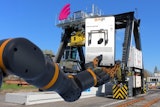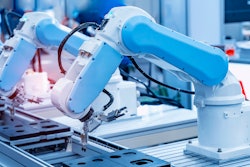
 It’s been a solid year for U.S. manufacturing. For the first time in decades, we have seen a swing in our direction as jobs have returned and customers have made their preference for American-made goods known. Manufacturing technology is improving, methods are becoming more refined and efficient, and plastics are as strong as ever.
It’s been a solid year for U.S. manufacturing. For the first time in decades, we have seen a swing in our direction as jobs have returned and customers have made their preference for American-made goods known. Manufacturing technology is improving, methods are becoming more refined and efficient, and plastics are as strong as ever.
Where will the trends take us in 2015? In the coming year, expect manufacturing to continue to be a bright spot — and potential lifesaver — for the U.S. economy. Below, see five predictions for 2015 and beyond.
1. Reverse Engineering Will Propel the Manufacturing Industry
Virtually anything can be reconstructed and improved. Throughout the history of manufacturing, innovation has hinged on the ability to make adjustments here and there until you have a newer, better product. If the manufacturing industry learned anything during the recent recession and recovery, it was how to be efficient and find new opportunities from existing products. In 2015, expect more manufacturers to apply this type of thinking to plastics. By “reverse engineering,” manufacturers are able to build on existing bodies of knowledge by looking at a completed product, breaking it down, learning how it works and ultimately, making improvements. It’s a common practice for parts and products that are no longer in production or ones that must be evaluated for potential weaknesses or defects that need to be designed out.
The benefit of reverse engineering is that manufacturers need not reinvent the wheel every time; rather, they look at what is working and make adjustments to either make a part perform even better or invent an entirely new one. It’s a principle that is being applied on a large scale, as well as with customized orders, and it’s picking up steam as customers are the ultimate beneficiary, with more cost-efficient ways to find solutions.
2. Precision Parts Are On the Rise
As customers settle into the new era of customized and repeatable manufacturing, the demand for precision parts likely will go up. In 2015, expect to see more of a focus on intricate plastic components, as well as manufacturing methods that are incredibly accurate. It’s a new age for innovation, and everything from customized plastic gears and sprockets to bearings and clamps will be in high demand.
3. The Production of Parts for Electronics Will Continue to Accelerate
Consumer demand for electronics is as strong as ever; in fact, by some accounts, it has increased by nearly 150 percent in the last decade. 2014 saw steady growth in consumer spending and an increase in disposable income — signs that typically indicate positive trends for the electronics industry. And lightweight, sturdy plastics are increasingly built into consumer electronics — including internal components, outer casings and more. This is all great news for the plastics industry, which is helping to lead the way in the U.S. manufacturing comeback.
4. 3D Printing Will Show It Has Staying Power
Some had called it a passing fad, but the past few years would indicate otherwise. Despite being a decades-old technology, 3D printing had a good 2014 from a public standpoint, making headlines for exciting new medical uses and more. It’s a technology that is capturing public interest, which only helps drive it to become a staple in plastics manufacturing.
Companies are using 3D printers to create prosthetic body parts and new medical devices; they are creating toys and tools; even the aerospace industry has taken notice of this rapidly evolving field. Interestingly, it’s a technology that is even penetrating the consumer market (read this interesting story about a 9-year-old boy who created a working hand from a 3D printer). And naturally, manufacturers are investing in the technology themselves. It’s proving to be a user-friendly technology that is incredibly precise and highly versatile, with new designs flooding in constantly. For those reasons, expect the trend of 3D printing to carry well into 2015 and beyond.
5. Manufacturing is Going to Get A Lot Smarter
You’ve read about the pending robotic revolution in manufacturing (automated everything) and how manufacturing is getting ever leaner, faster and more efficient. But there’s more to the manufacturing technological boom than that. The process itself is evolving, with or without robots. And that’s because we are quickly learning how to collect and use valuable data related to process. Sensors are increasingly important in manufacturing as they give invaluable data for improving efficiencies and reducing potentially costly errors. And wireless technology is increasing our ability to place and use those sensors. In 2015, watch for leaps and bounds in the world of sensors; and consequently, you can expect even more streamlined processes that result in better products.
We’ve got innovation, market factors and more on our side heading into 2015. Overall, manufacturing should brace for another strong year.
About the Author David Nelson is the President of Nel Pretech Corporation; an A2LA accredited dimensional measurement lab servicing to the manufacturing industry and is located in the southwest suburbs of Chicago, Illinois.























